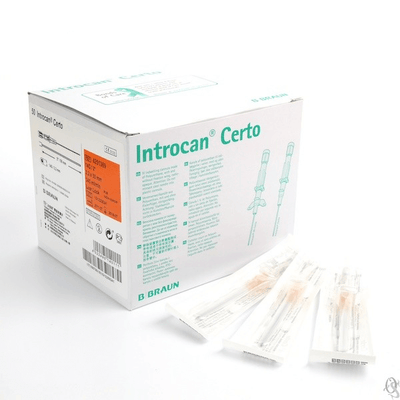Piercing bumps, sometimes called granulomas, can be a common part of the healing process for some people. However, other bumps at the site of the initial piercing can be a sign of an infected piercing or allergic reaction.
They can be itchy and uncomfortable, but they can also cause further damage if not treated properly. It's important to understand why piercing bumps occur so that you recognise them and take steps to prevent them.
This article provides information on how to identify piercing bumps, what causes them and the best ways to treat them. With this knowledge at your disposal, you'll be able to keep your piercings healthy and free from irritation!
Prevent infections and shop piercing aftercare today!

What are piercing irritation bumps?
Piercing bumps are small, raised bumps that can appear on the site of a piercing. They most commonly appear following cartilage piercings such as those on the upper ear or a nose piercing.
An irritation bump occurs as part of the body's immune response; after a body piercing, it's common for a little bump to form due to the initial swelling and trapped fluid.
How long do piercing bumps last?
In many cases, the bump caused by a new piercing will clear up on its own within a few weeks. However, some people may experience an allergic reaction or infection which will cause the irritation bump to persist for much longer.
What is the difference between a piercing bump and a keloid?
A keloid scar is a larger lump that can form from excessive scar tissue and collagen build-up around the piercing. Unlike most piercing bumps, which can heal nicely after a few weeks, keloid scars may require more aggressive treatments such as steroid injections or surgery to improve their appearance.
How do you treat piercing bumps?
The best way to treat piercing bumps is to identify and address the underlying cause. You should keep the area clean and wash your new piercing with a saline solution, without changing your jewellery for the first few months. If the bump is caused by an infection, it's important to see a doctor as soon as possible and get antibiotics.

If the bump is due to an allergic reaction, then the best course of action is to find out which material you are allergic to and avoid it in the future. You can also use a topical steroid cream to help reduce itching and swelling. Try using warm compresses several times a day to reduce the swelling.
Should you pop a piercing bump?
No! Popping a piercing bump can cause further damage to the surrounding tissue and increase your risk of infection. If you have a piercing bump, it’s best to treat it by keeping the area clean and dry. If the bump persists, consult a medical professional or piercing expert for advice on how to treat it.
What are other causes of irritation bumps?
A bump can also appear on a piercing site due to an allergic reaction or infection. Allergic reactions can occur due to the body’s sensitivity to a certain material, such as nickel or silver. You should make sure that you get pierced with high-quality piercing jewellery. If you know that you have a jewellery allergy, be sure to choose a piece that doesn't contain metals you are sensitive to.
Infected piercings can also cause bumps to form. Body piercings can become infected if improper care has been taken of the piercing site, or if the initial piercing wasn't sterile (a piercing gun can introduce bacteria into the piercing site).
If you don't clean the area regularly and keep it dry as it heals, bacteria can accumulate and an infection can occur. Make sure your hands are clean whenever you touch your piercing.
If your piercing bump is extremely painful, or if there is a lot of pus coming from the area, it is likely to be infected. In this case, you should consult a medical professional as soon as possible. Your doctor will likely prescribe antibiotics to clear up the infection and reduce inflammation.

Tips to Avoid Getting Piercing Bumps
The best way to prevent piercing bumps is to practice proper aftercare at the pierced site. This includes keeping the area clean by washing it regularly with a saline solution. It’s also important to dry the area thoroughly to avoid any moisture build-up that can lead to infection.
Additionally, be sure to always go to a professional piercer who will be sure to use quality jewellery and sterile equipment.
The journey to fully-healed body piercings
Piercing bumps can be an annoying and irritating problem, but they usually heal on their own with proper aftercare.
If the bump persists or is accompanied by pain or pus, it’s best to consult a medical professional for advice and treatment. With proper care and caution, your piercings will be fully-healed and looking great in no time!
Look after new piercings — shop the piercing aftercare collection today.
Other helpful articles
Pierce like a pro: reasons to invest in quality piercing gear




























































 Studio supplies
Studio supplies












 Power & batteries
Power & batteries







 Aftercare
Aftercare



















 Apprentice
Apprentice


 Piercing & jewellery
Piercing & jewellery







 PMU supplies
PMU supplies



 New arrivals
New arrivals
 Gift vouchers
Gift vouchers
 Shop all
Shop all









































